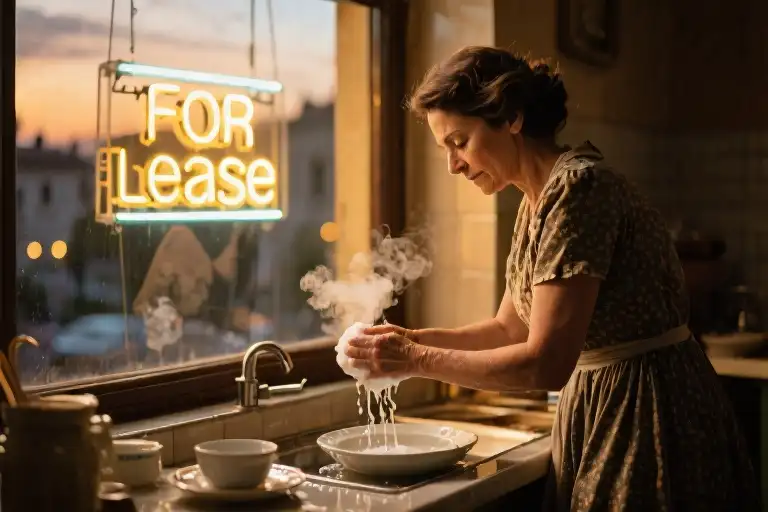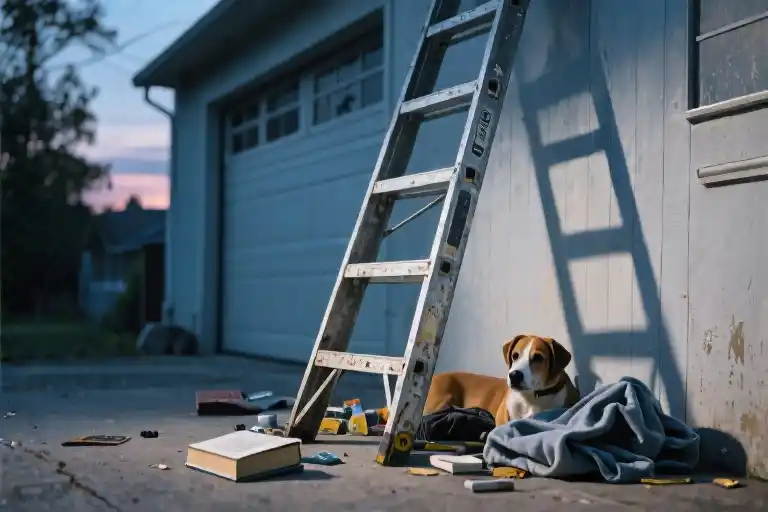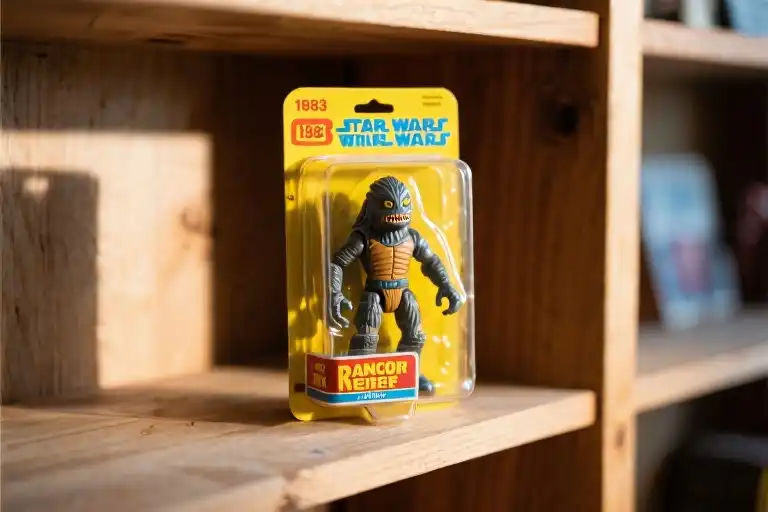The familiar hum of the football commentary blends with the rhythmic splash of dishwater as my mother’s profile catches the warm kitchen light. ‘When are you coming next?’ she asks, not turning from the sink, her question hanging between the clinking plates. This is our Saturday ritual – thirty miles away from my daily grind of courses and lessons, these stolen hours where my husband debates politics with Dad in the living room while Mom and I reconstruct our fractured timelines through soap bubbles and neighborhood gossip.
Then the memory fractures. A glitch in the routine. The fluorescent glare of ‘6:17 Regional Express’ on the station display board from last Wednesday morning flashes unexpectedly across my thoughts, its digital glow bleeding into the cozy kitchen scene. That uncharacteristic dawn journey when I finally claimed a whole morning for myself still vibrates beneath these weekend rhythms, its discoveries about our changing hometown – and changing relationships – waiting to surface between the well-worn grooves of our Saturday night script.
Thirty miles might as well be thirty lightyears some weeks. The distance swallows two and a half hours each way – traffic snarls around the suburban shopping plazas, obligatory grocery stops for aging parents who won’t ask for help, the endless hunt for parking near their ever-gentrifying neighborhood. Our visits have become exercises in time management: fifteen minutes for family gossip while loading the dishwasher, thirty for folding laundry that smells faintly of their fabric softener from my childhood, forty-five pretending to check emails while actually memorizing the new lines around Dad’s eyes as he enthuses about football strategies using a 2018 match ticket as a bookmark.
Yet beneath these measured moments, something pulses insistently. That Wednesday morning’s train ride along the coastline had revealed the town’s shifting anatomy – how the bakery that made my tenth birthday cake now houses a vaping lounge, how the cobblestones near the old harbor still bear ghostly impressions of hardware store logos from two decades past. My phone’s photo app had cruelly auto-generated a side-by-side comparison as I walked, superimposing 2013’s colorful awning-lined promenade over today’s minimalist storefronts catering to Instagram aesthetics. The espresso that once cost 1.50 euros now goes for 4.20 at a ‘specialty coffee experience’ counter, though fewer people seem to linger over it.
Back in the Saturday night kitchen, Mom’s hands move automatically between dish rack and cupboard as she drops economic data into our conversation like breadcrumbs: ‘Giovanni’s pizzeria paid 3,000 euros monthly rent – that’s 1,500 Margheritas just to stand still.’ Outside the window, a fresh ‘For Lease’ sign flaps against the vacated gelato shop across the street. The football crowd roar from the living room television merges with a news bulletin about local business closures, their combined noise drowning out whatever my mother says next about the dressmaker’s daughter moving to Milan.
When we embrace goodbye later, her hands suddenly press something cold into mine – an old biscuit tin whose contents rattle with the weight of more than cookies. Through the kitchen window, I see the neon ‘Open’ sign of yet another new boutique reflected in its lid, its light pulsing red across my mother’s handwritten figures from 1989. The last page holds a single penciled sentence, its tailing ellipsis smudged by time or touch: ‘For Maria’s dowry – if she’ll take over the shop…’
The Economics of Routine Visits
Thirty miles shouldn’t feel like a transatlantic flight, yet my Saturday pilgrimages to my parents’ home have developed their own peculiar time calculus. What appears on maps as a straightforward 45-minute drive inevitably stretches into a two-and-a-half-hour expedition – twenty minutes lost in supermarket aisles clutching last-minute groceries, forty-five minutes crawling through suburban traffic while my husband refreshes football scores on his phone, another twenty circling familiar streets searching for parking spaces that vanished years ago.
The kitchen becomes our temporal laboratory where we measure affection in carefully portioned units. Our ninety-minute visits follow an unspoken algorithm: fifteen minutes for my mother to dissect neighborhood gossip while scrubbing pans, thirty for me to ‘help’ with chores that never truly need assistance, forty-five for that peculiar dance of pretending we’re not counting down to departure. The digital clock on the microwave blinks through these segments with cruel precision.
My father preserves time in unexpected places. The 2018 championship ticket protruding from his cookbook isn’t mere memorabilia – it’s a temporal bookmark separating pre-pandemic visits from our current constrained encounters. When he pulls it out to point at some football statistic, I see the coffee ring stains marking where our conversations paused three winters ago.
These compressed reunions create their own physics. Distance contracts when my mother’s laughter echoes exactly as it did in childhood, yet expands when I notice new medications lining the windowsill. The thirty-mile return drive always feels shorter, as if the act of leaving somehow breaks the time spell. Yet by Tuesday, the visit already seems months past – until my phone lights up with mother’s customary Wednesday text: ‘Shall we save you plates this weekend?’
Our ritual persists not despite its constraints, but because of them. In a world where video calls promise constant connection, there’s sacred mathematics in these measured hours. The precisely allocated minutes become vessels we fill more carefully, the limited duration forcing us to distill conversations to their essence. Like my father’s yellowing ticket stub, these visits mark more than time spent – they measure what we choose to preserve when the clock is always watching.
The Archaeology of a Reverse Commute
The 6:17 Regional Express hums into the station with that particular sigh of tired metal I’ve known since childhood. Stepping onto the platform, I instinctively turn left – past the new digital timetable flashing ads for phone plans – toward the shortcut through town I’ve walked for twenty years. Only now, the familiar route feels like an excavation site.
Surface Layer: 2023’s Fleeting Trends
Bubble tea shops bloom like seasonal flowers in this stretch, their neon logos competing with vape stores’ neon veins. A pink-awninged place advertises ‘Instagrammable drinks’ where Signora Rossi’s linen drapes once fluttered. The smell of synthetic mango replaces her lavender sachets. I catch my reflection in a QR code sticker plastered over what was definitely a bakery window last Christmas.
Mid-Level Strata: Ghosts of the 2010s
My sneakers scuff against terrazzo tiles that still bear ghostly outlines of ‘Souvenir Adriatico’ – that tacky yet beloved shop where we bought inflatable flamingos every summer. Its replacement (a crypto payment hub) has already boarded up. Further down, the ‘Artisanal Limoncello’ sign peeks through cheap vinyl siding like a message in a bottle. I snap a photo where my phone’s ‘Memories’ feature overlays a 2014 image: same doorway, different dream sellers.
Deep Time: 2005 and Before
Near the post office, my toe catches on an iron cellar grate stamped ‘F. Brunetti Hardware 1972-2005.’ The grooves still collect rainwater like tiny wishing wells. I remember the owner’s grandson explaining their closure while packing wrenches into crates: ‘Amazon delivers hammers before lunch now.’ The pavement here wears its history in patches – hexagonal tiles from the 80s, concrete infills from the recession years, fresh asphalt where another family business became a DoorDash dark kitchen last month.
My phone pings with an automated collage: ‘Then & Now – Via Garibaldi.’ On the left, 2013’s bustling street with Mr. Conti arranging ceramic dolphins in his shop window. On the right, today’s identical angle shows a vacant space with a handwritten note: ‘No repainting needed – last tenant stayed 11 days.’ The algorithm has drawn a heart around the unchanged cobblestones where I once skinned my knee chasing ice cream trucks.
Walking these layers feels like reading a pop-up book where pages keep getting torn out and replaced. The new shops have all the permanence of Snapchat stories – here long enough for a geotag, gone before the lease ink dries. Yet beneath the churn, the town’s bones remain: that one cracked step by the pharmacy, the rusted lamppost that always flickers, the particular way morning light still angles through the piazza at 7:42am. These are the coordinates that still guide me home.
The Economics of Dishwater Conversations
The rhythmic clinking of plates formed a steady counterpoint to my mother’s voice as she wiped a porcelain surface with methodical precision. ‘Three thousand euros just to keep the lights on at Giovanni’s,’ she remarked casually, turning a dinner plate to catch the afternoon light. ‘That’s fifteen hundred Margherita pizzas every month before they see profit.’ Her hands, moving with the muscle memory of forty years in their own bakery, traced the edges of a coffee stain I’d missed while washing.
Through the kitchen window, a new ‘For Lease’ sign flapped against the glass of what had been my childhood stationery store. The realization struck with the same dull weight as the stack of wet dishes – another piece of our personal geography erased by spreadsheets and profit margins. Outside, clusters of summer visitors licked €3 gelato cones beneath the awning where Mr. Bianchi once displayed his handmade leather journals.
‘Remember when the fishmonger taught you to scale sardines?’ Mom asked suddenly, her eyes following my gaze. The question contained its own answer – that corner now housed a neon-lit vape shop, its chrome fixtures reflecting the Adriatic sun in harsh geometric patterns. She dried her hands on the checkered towel before reaching for the ledger book they still kept by the telephone. The pages fell open to a spread from my high school years, where my father’s neat columns recorded flour costs alongside my ballet lesson payments.
Our Saturday night ritual had always followed this unscripted curriculum – personal memories woven with market realities, family milestones measured against municipal tax increases. The transfer notice taped to the pizzeria’s door became this week’s case study, its bold font stating what our conversation only implied: even here, where generations had sustained themselves on tourism and trade, the arithmetic no longer favored those who measured time in decades rather than quarterly reports.
As Mom folded the towel with the same care she’d once given to pastry dough, the television in the next room erupted with soccer cheers. The simultaneous roar of the crowd and the hiss of faucet water created an accidental metaphor – the competing currents of tradition and change, both too loud to ignore. Through the steam rising from the sink, I watched her finger trace the spine of the ledger, pausing at a page marked with my college acceptance letter. The numbers there told a quieter story of investment and return, one that no rental contract could ever quantify.
The Iron Box of Inheritance
Mother’s hands trembled slightly as she pressed the cold metal box into my palms during our goodbye embrace. The December chill had seeped through the kitchen windows, making the vintage biscuit tin feel like an ice cube against my skin. ‘Your father’s kept every receipt since we took over Nonno’s shop,’ she murmured, her breath forming little clouds in the unheated hallway.
Inside lay three decades of family history pressed between accounting pages – yellowed invoices from 1989 written in my grandfather’s dramatic cursive, faded photocopies of health inspection certificates, and coffee-stained balance sheets where my teenage doodles still lingered in the margins. The papers smelled of cinnamon and diesel, the peculiar aroma of our old bakery-delivery van that doubled as my childhood playhouse.
My thumb caught on a loose page near the bottom. There, in Mother’s schoolteacher-perfect handwriting, an unexpected entry appeared beneath the June 1997 financial summary: For Maria’s dowry – if she’ll ever consider continuing… The sentence trailed off into nothingness, the pencil marks softened by years of storage but still legible enough to make my throat constrict.
Through the frosted glass door, I watched my husband load our weekend bags into the car, completely unaware of the generational weight suddenly occupying my coat pocket. The bakery keys attached to the box’s interior jingled faintly – I hadn’t noticed them earlier beneath the paperwork. Their dull brass surfaces still bore the teeth marks from when I’d teethed on them as an infant.
‘We’re holding the lease through spring,’ Father called from the living room archway, his voice carefully neutral. On the television behind him, the local news channel displayed a graph titled Commercial Property Values 2000-2023, the red line shooting upward like a rocket trajectory. The chyron below read Traditional Businesses Face Succession Crisis – coincidentally mirroring our silent family standoff.
As our car pulled away, I pressed my palm against the tin now warming to body temperature in my lap. Through the rear window, the For Rent sign on our former pastry shop’s striped awning flapped persistently in the coastal wind, its metal chain clinking against the pole in what sounded suspiciously like an old cash register’s chime. The sound followed us all the way to the highway on-ramp, blending with the GPS’s automated reminder: Recalculating route…





